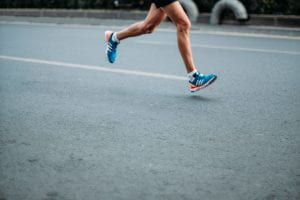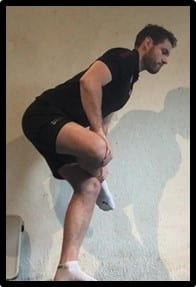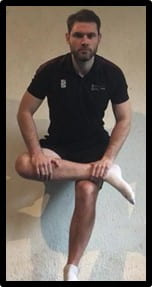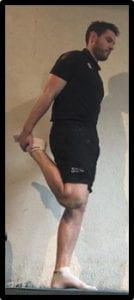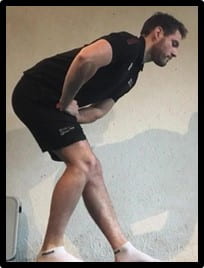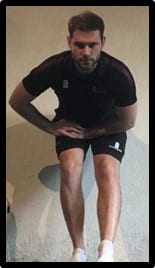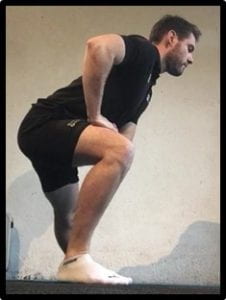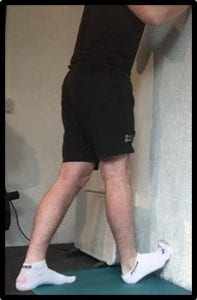Cool down exercises form part of your wider recovery strategy, designed to return your body to its pre-exercise, rested, state as fast as possible. In this post, we will explain and provide examples of cool down strategies you can use after you have been for a run.
Exercise results in a temporary reduction in performance. This is essential for our bodies to rest and repair, and ultimately promotes the adaptations to our body that will help us in our continued training. Cool-down exercises support and encourage this process so that we can perform exercise more frequently.
Whilst cool–downs don’t directly reduce the risk of injury, they do help to improve our recovery time. Our chance of injury in future sessions is therefore reduced as exercising when fatigued is a major risk factor for injury.
Two simple methods we can use as part of a cool down routine to increase recovery are:
- a gradual reduction in speed over 3-5 minutes
- A variety of static stretches
Cool down slow run or walk
A gradual reduction in our running/jogging speed over 3 to 5 minutes slowly lowers both our heart rate and blood pressure, preventing any sudden changes that could result in light–headedness or – in extreme cases – fainting!
Transitioning from high-intensity to low-intensity activity also maintains enough blood flow to active muscles to prevent a phenomenon called blood pooling. This is when blood remains in areas of the body as a result of inactivity and delays the return of the blood to the heart and brain. An effective cool–down run should be slower than the pace used during your training session and gradually slow down over 3 to 5 minutes.
Static stretching
Static stretching can increase blood flow to help muscles recover, and stimulate our parasympathetic nervous system (otherwise known as the “rest and digest” system) to aid overall recovery after exercise. If performed regularly, over a long period of time, static stretches can also benefit us by increasing our Range of Motion and develop tissue elasticity..
Increased blood flow
During the stretch, blood flow is reduced, but on release increases to a rate greater than prior to the stretch. This increase aids the movement of nutrients to our muscles and simultaneously removes any toxic chemical by-products of exercise, such as lactic acid.
Rest and digest
During exercise our sympathetic nervous system is activated – this is also known as our “fight or flight” response. While this response is advantageous when exercising, during recovery our parasympathetic nervous system is beneficial. Parasympathetic activation promotes the relaxation of our body and rejuvenation of homeostasis (our ‘steady’ state)
Range of motion
There are a few things to consider here. First, activation of our sympathetic nervous system, as mentioned above and high muscle excitability and tension post–exercise can reduce how far a muscle can be stretched/ elongated. However if the stretch is held for an extended period of time, excitability decreases and parasympathetic systems increase, resulting in normal, or even increased, ranges which can be reached. Second, static stretching can only increase our range of motion for a short period of time. To get long-term changes in our range of motion, static stretching will need to be performed regularly over a long period of time.
Delayed Onset Muscle Soreness (DOMs)
Delayed Onset Muscle Soreness is the sore and tight (and sometimes quite uncomfortable) sensation felt in your muscles anywhere from 24 to 48 hours after exercise. Unfortunately, the effect of stretching on reducing DOMs is not as conclusive, and many studies suggest it has little to no effect. Some even suggest stretching has more of a placebo effect than any real and measurable benefit.
Despite the research, we still recommend putting the following stretches into your cool-down routine, for the many other benefits it has on your body’s recover, training and performance, long-term.
Standing stretches
These stretches can be performed both indoors or outdoors.
All stretches should be held for a minimum of 30-seconds, and for up to 1-minute per leg.
Hold onto something for balance if you need to.
Glute Stretch
- Rest the ankle of one leg ankle on top of opposite knee.
- Slowly bend the standing leg, keeping you weight in your heel to maintain balance.
- Gently apply pressure to the knee of the crossed leg until you feel a light stretch in the Glute/hip of the crossed leg.
- Repeat for your other leg.
Quadricep Stretch
- Find your balance on one foot, and pull the heel of your other leg into your glute.
- Keep knees aligned and strand up straight, whilst keeping a slight bent in the knee of your standing leg (don’t lock it out).
- Squeeze your glutes and brace your abdominal muscles to prevent your rib cage tucked in and your lower back arching.
- You should feel a gentle stretch in the front of the thigh.
- Repeat for your other leg.
Hamstring Stretch
- Place one foot in front of the other with the leg straight.
- Bend the rear leg and gradually lean your chest towards the front foot, sending your hips backwards.
- You should begin to feel a gentle stretch in the back of the thigh of the front leg.
- Hands can be placed on the thigh of your back leg, or on your hips.
- Aim to keep your back straight, by bending from the hips.
- Repeat for your other leg.
Adductor Stretch
- Take a wide sideways step, bending one leg and keeping the other straight.
- Shift your weight into your bent leg, sending your hips backwards and keeping the weight in your heel.
- You should feel a gentle stretch in the inside of the thigh of the straight leg.
- Aim to keep your back straight, by bending from the hips
- Repeat on the other side.
Calf Stretch
- Using a wall, tree or piece of furniture, prop the toes of your front foot.
- Slowly lean your chest forward until you feel a gentle stretch in the calf of the front leg.
- At this point most of your weight should be in the front leg.
- Repeat for the other leg.
For more running and training resources and guidance, head to the University of Bristol Run Series Support Hub.
Sign up for one, two or all three of the (virtual) events in our University of Bristol Run Series on our website.
Already signed up? Join the conversation on Strava and in our exclusive Facebook Group for runners!
[GIF via GIPHY]

